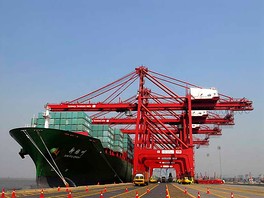
The United States has proposed a significant reduction in the number of members of the World Trade Organization (WTO) that would qualify for developing country status and benefit from special and differential (S&D) treatment. This post examines the treatment of developing countries under the WTO Government Procurement Agreement (GPA), the few cases in which GPA parties have been permitted to use S&D measures, and the potential application of such measures to China.
The GPA has long been comprised of mostly developed countries. That has begun to change slowly as new WTO members are persuaded or encouraged to take on a commitment to seek GPA membership when they become WTO members. Since the WTO was established, two-thirds of its new members have undertaken such a commitment. Several are in negotiations to join the GPA, including China, Russia, Kyrgyz Republic, Tajikistan and the former Yugoslav Republic of Macedonia.
The 2012 revision of the GPA expanded special measures available for developing countries to encourage and facilitate their accession. The transitional measures relating to market access include: higher temporary thresholds (monetary values at and above which the GPA applies); phased-in coverage of specific entities or sectors; price preferences; and offsets, the requirement of domestic content.
The GPA also allows a least developed country (LDC) to delay application of specific provisions of the Agreement for five years after it becomes a party, and up to three years for other developing countries. GPA parties must accord S&D treatment, on request, to LDCs. However, for other developing countries, GPA parties will approve such treatment “where and to the extent that [S&D] treatment meets its development needs”.
The GPA parties have approved the application of transitional measures for only a few members. When Chinese Taipei (Taiwan) become a GPA party in 2009, based on its WTO commitment to do so, it was permitted to apply offsets of up to 50% of the procurement for a period of 10 years. Also, Moldova was allowed to apply higher thresholds for two years after it became a party in July 2016.
The most extensive special measures have been applied by Israel. Dating back to its entry into the GPA’s predecessor, the GATT Code on Government Procurement, and continuing under the GPA, Israel has maintained offsets. When the GPA replaced the GATT Code, Israel was required to reduce gradually its offset level from 35% of the value of a contract; in 2009, it reduced its offset level to 20% for tenders covered by the GPA.
In the GPA revision, Israel agreed to phase-out its offset regime for GPA-covered procurement over a period of 15 years. Beginning in 2014 when it ratified the revised GPA, Israel was required to limit its application of offsets to procurement with a value above three million Special Drawing Rights. It also committed to progressively reduce the number of entities that apply offsets and the level of offsets from 20% level to zero.
Developing countries that have joined the GPA without any transitional measures include Armenia, Montenegro and Ukraine.
In China’s negotiations to join the GPA, one of the outstanding issues is whether the parties should permit China to apply S&D measures. In its most recent offer, tabled in 2014, China included several transitional measures: phased-in thresholds for all of its entities, phased-in coverage of 10 provinces and an open-ended use of offsets. The GPA parties will need to decide whether to permit China to apply such measures.
The timing of China’s eventual accession may be a factor in the parties’ response to its proposed transitional measures. When China applied for GPA membership in 2007, its Government Procurement Law was only five years old. Since then, it has adopted a number of other procurement measures, which reflect the growing sophistication and development of its procurement system.
In addition, China’s procurement market is growing steadily. In its WTO’s 2018 Trade Policy Review, China provided data that the total value of its government procurement had increased significantly since its 2016 review, rising from RMB 1.73 trillion in 2014 to RMB 3.11 trillion in 2016, the latest figures available for each year.
The GPA parties may view China’s need of transition measures very differently today than they would have had it applied for GPA accession as soon as it joined the WTO in 2001. China, of course, could withdraw its proposed transitional measures when it submits its next offer as an acknowledgement of the growth of its procurement system and economy.
The GPA parties' response to China's proposed transitional measures will likely set a precedent for subsequent accessions.
Jean Heilman Grier
March 14, 2019
Related Posts
China’s 2014 Offer Advances GPA Accession
China’s 2018 WTO Trade Policy Review: Procurement Highlights
Moldova’s Terms for GPA Accession

